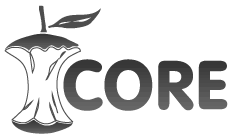Creatividad en la perspectiva sociocultural: ¿Por qué las mujeres son menos frecuentemente reconocidas como creativas?
DOI:
https://doi.org/10.36881/ma.v2i1.773Palabras clave:
creatividad, brecha de género, obstáculos socioculturales, desigualdad, equidadResumen
La creatividad en una perspectiva sociocultural es definida como un fenómeno complejo y aplicado, que está influenciado por diversos factores y genera transformación en el contexto. El objetivo del presente estudio fue discutir cómo los estereotipos y las barreras de género, fundamentados en las estructuras socioculturales, constituyen factores inhibidores del desarrollo, expresión y reconocimiento de la mujer creativa. Para ello, fue realizada una revisión de literatura. Fueron analizados datos de investigaciones previas que aportan información sobre diferentes barreras superadas por mujeres altamente creativas, proporcionando una interpretación sobre los desafíos que enfrentaron en su camino hacia el reconocimiento creativo. Como resultado, este análisis no sólo arroja luz sobre las dificultades, sino que también identifica áreas específicas que requieren atención para impulsar una transformación social significativa. Se subraya la urgencia de superar los prejuicios y limitaciones impuestos por la sociedad, destacando la importancia crítica de establecer un ambiente sociocultural que celebre y reconozca la creatividad de manera equitativa para todas las personas. Al hacer hincapié en la necesidad de romper los obstáculos que limitan la expresión creativa de las mujeres, este trabajo contribuye a la discusión sobre la equidad de género en el ámbito creativo.
Descargas
Citas
Amabile, T. M. (1988). A model of creativity and innovation in organizations. Research in Organizational Behavior, 10, 123-167.
Amabile, T. M., & Pratt, M. G. (2016). The dynamic componential model of creativity and innovation in organizations: Making progress, making meaning. Research in Organizational Behavior, 36, 157-183. https://doi.org/10.1016/j.riob.2016.10.001
Amorós, C. (1985/1992). Hacia una crítica de la razón patriarcal (2 ed.). Anthropos.
Anderson, K. (2015). Modern misogyny: Anti-feminism in a post-feminist era. Oxford University Press.
Bender, S. W., Nibbelink, B. L., Towner-Thyrum, E., & Vredenburg, D. (2013). Defining characteristics of creative women. Creativity Research Journal, 25(1), 38-47. https://doi.org/10.1080/10400419.2013.752190
Csikszentmihalyi, M. (1999). Implications of a systems perspective for the study of creativity. In R. J. Sternberg (Org.), Handbook of creativity (pp. 313-335). Cambridge University Press. https://doi.org/10.1017/CBO9780511807916.018
Elisondo, R. C. (2018). Procesos creativos de mujeres emprendedoras. Boletín Científico Sapiens Research, 8(1), 41-53. https://dialnet.unirioja.es/servlet/articulo?codigo=6705581
Femenías, M. L. (2020). Ellas lo pensaron antes: Filósofas excluidas de la memoria (Espiritualidad & Pensamiento). Ediciones Lea.
Ferrant, G., & Thim, A. (2019). Measuring women’s economic empowerment: Time use data and gender inequality. OECD Development Policy Papers, 16. https://doi.org/10.1787/02e538fc-en
Gerodetti, N., & McNaught-Davis, M. (2017). Feminisation of success or successful femininities? Disentagling “new femininities” under neoliberal conditions. European Journal of Women Studies, 24(4), 1-15. https://doi.org/10.1177%2F1350506817715045
Glăveanu, V. P. (2020). A sociocultural theory of creativity: Bridging the social, the material, and the psychological. Review of General Psychology, 24(4), 335-354. https://doi.org/10.1177/1089268020961763
Grönlund, A., & Öun, I. (2018). In search of family-friendly careers? Professional strategies, work conditions and gender differences in work–family conflict. Community, Work & Family, 21(1), 87-105. http://doi.org/10.1080/13668803.2017.1375460
Heilman, M. E., & Caleo, S. (2018). Combatting gender discrimination: A lack of fit framework. Group Processes & Intergroup Relations, 21(5), 725-744. https://doi.org/10.1177/1368430218761587
Kaufman, J., C., & Sternberg, R. (2019). An introduction to the second edition: Divergences and some convergences. In J. Kaufman, & R. Sternberg (Eds.), The Cambridge handbook of creativity (pp. 1-4). Cambridge University Press. https://doi.org/10.1017/9781316979839.002
Kronborg, L. (2010). What contributes to talent development in eminent women? Gifted and Talented International, 25(2), 11-27. https://doi.org/10.1080/15332276.2010.11673567
Kronborg, L. (2021). Eminent women were once gifted girls: How to transform gifted potential into eminent talents. In R. J. Sternberg, & D. Ambrose (Eds.), Conceptions of giftedness and talent (1st ed., pp. 215-233). Palgrave Macmillan. https://doi.org/10.1007/978-3-030-56869-6_13
Mensa, M. T., & Grow, J. M. (2015). Creative women in Peru: Outliers in a machismo world. Communication & Society, 28(2), 1-18. https://doi.org/10.15581/003.28.35962
Molina-Luque, F., Casado Gual, N., & Sanvicen-Torné, P. (2018). Mujeres mayores también activas, creativas y fuertes: Modelos para romper estereotipos. Revista Prisma Social, 21, 43-74. https://revistaprismasocial.es/article/view/2438
Nakano, T. C., Oliveira, K. S., & Zaia, P. (2021). Gender differences in creativity: A systematic literature review. Psicologia: Teoria e Pesquisa, 37, 372116. https://doi.org/10.1590/0102.3772e372116
Navarro, C. G. (2020). Invitadas. Fragmentos sobre mujeres, ideologías y artes plásticas en España (1833-1931). Museo Nacional del Prado.
Pedersen, C., & Haynes, R. (2015). Double blind: Supervising women as creative practice-led researchers. Educational Philosophy and Theory, 47(12), 1265-1276. https://doi.org/10.1080/00131857.2015.1035631
Plucker, J. A. (2022). Creativity: It´s not just for hippies anymore. In J. A. Plucker (Ed.), Creativity and innovation theory, research, and practice (2nd ed., pp. 1-4). Routledge. https://doi.org/10.4324/9781003233923-1
Observatorio de la Cultura. (2020). La Cultura en España. Fundación contemporánea.
Porto, M. M. (2023). Obstáculos para el desarrollo y reconocimiento de mujeres altamente creativas. Aportaciones para reducir la brecha de género. (Tesis doctoral no publicada). Universidad Autónoma de Madrid. https://repositorio.uam.es/
Porto, M. M., & Romo, M. S. (2021). Características personales de mujeres altamente creativas: una revisión sistemática. Revista Ibero-Americana de criatividade e inovação, 2(4), 241-255. https://recriai.emnuvens.com.br/revista/article/view/59
Porto, M. M., & Romo, M. S. (2022). The generative force of the domain and the field: contributions of highly creative women. Creativity, 9(2), 119-137. https://doi.org/10.2478/ctra-2022-0014
Posada, K. K. (2009). Filosofía y feminismo en Celia Amorós. Logos: Anales del Seminario de Metafísica, 42, 149-168. https://dialnet.unirioja.es/servlet/articulo?codigo=3137586
Prado, R. M., & Fleith, D. S. (2020). Mulheres talentosas no Brasil: Trajetórias e desafios profissionais na sociedade contemporânea. Psicologia em Estudo, 25, 46906. https://doi.org/10.4025/psicolestud.v25i0.46906
Reis, S. M. (2002). Internal barriers, personal issues, and decisions faced by gifted and talented females. Gifted Child Today, 25(1), 14-28. https://doi.org/10.4219/gct-2002-50
Reis, S. M. (2005). Feminist perspectives on talent development: A research based conception of giftedness in women. In R. J. Sternberg, & J. Davidson (Eds.), Conceptions of giftedness (2nd ed., pp. 217-245). Cambridge University Press.
Reis, S. M. (2021). Creative productive giftedness in women: Their paths to eminence. In R. J. Sternberg, D., & Ambrose (Eds.), Conceptions of giftedness and talent (pp. 317-324). Palgrave Macmillan. https://doi.org/10.1007/978-3-030-56869-6_18
Rodrigo, A. (1979). Mujeres de España. Las silenciadas. Plaza & Janés.
Romo, M. (2018). Tiene género la creatividad? Obstáculos a la excelencia en mujeres. Estudos de Psicologia (Campinas), 35(3), 247-258. http://dx.doi.org/10.1590/1982-02752018000300003
Stainback, K., Kleiner, S., & Skaggs, S. (2016). Women in power: Undoing or redoing the gendered organization? Gender & Society, 30(1), 109-135. https://doi.org/10.1177/0891243215602906
Shields, S. (1975). Functionalism, Darwinism, and the psychology of women. American Psychologist, 30(7), 739-754. https://doi.org/10.1037/h0076948
Descargas
Publicado
Cómo citar
Número
Sección
Categorías
Licencia

Esta obra está bajo una licencia internacional Creative Commons Atribución 4.0.
El contenido de las publicaciones es responsabilidad de los autores. La revista permite a los autores mantener los derechos de autor sobre los artículos y documentos publicados. La licencia usada es Commons Reconocimiento -No Comercial Internacional License. CC BY

















